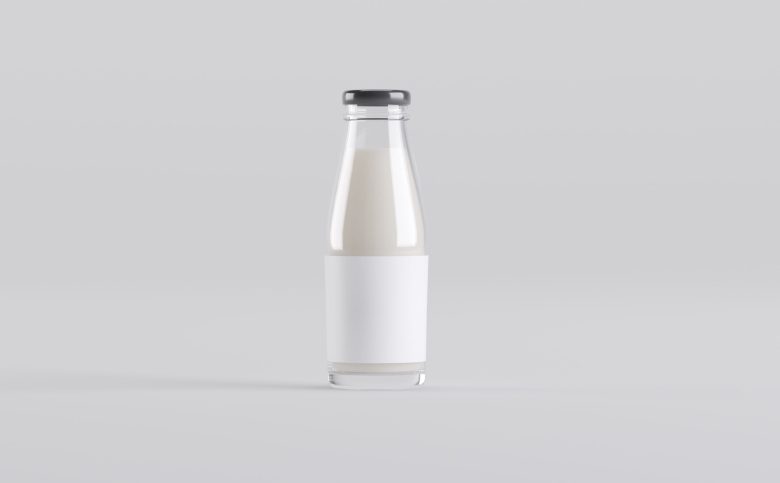
This article was authored by The Institute for Sustainable Futures, the University of Technology Sydney (UTS)’ Dr Melita Jazbec, Benjamin Madden and Dr Nick Florin, as interviewed by NSSN media officer Shahrzad Abbasi and first appeared in the Nov 2021 issue of Australian Printer
Labels play a vital role in increasing brands’ visibility and to communicate the value of products to the consumer. They include information about product content, instructions, and warnings.
Labels also carry product traceability information about manufacturing, shipment, delivery and use of raw materials. This information is encrypted in an identification number or barcode or alternatively in an ultraviolet watermark.
The container label on a milk bottle doesn’t have to be a deal breaker in achieving a circular economyWhile in some cases the information is required only temporarily and easy label removal is advantageous, in other cases it is critical that labels withstand the whole life cycle of the product, including cold storage as is the case for milk bottles. For these reasons labels are designed to be robust, however this can be an issue at the product’s end of life making recycling challenging.
Efforts to increase recycling rates of packaging align with the broader aim to transition away from the linear ‘make-use-dispose’ economy to a more circular economy. The circular economy transition follows three key principles: (1) eliminate waste and pollution; (2) keep products and materials in use for as long as possible through reuse and recycling; and (3) regenerate natural systems.
Poor label design and material selection can lead to the generation of unnecessary waste and be problematic for material recovery at the end of the product’s life.
The Institute for Sustainable Futures (ISF) at the University of Technology Sydney (UTS) joined the NSW Smart Sensing Network (NSSN) as part of a consortium of researchers (from the University of Sydney and UNSW) and industry partners focused on addressing the issue of label materials and adhesives contaminating milk bottle recycling.
The consortium was led by PEGRAS and included industry partners Labelmakers and several dairy companies. ISF research focused on providing a whole-of-system analysis including material flow modelling of milk bottle flows from consumption to recovery at end of life.
Australians consume one billion milk products each year, predominantly milk sold in two-litre (65 per cent) and three-litre milk bottles (25 per cent). Milk bottles are made of highly recyclable natural high-density polyethylene (HDPE). The labels that are attached to the milk bottles are primarily made from polypropylene (PP). While labels (380 tonnes) and adhesive (145 tonnes) represent only a small proportion of the 48,000 tonnes of milk bottle packaging placed on the market, they impact the recycling process by potentially contaminating the final product.
The label technology has changed over time including transitioning away from paper to PVC (vinyl) to be tear-proof and waterproof. More recently, PP has been used instead of PVC offering similar physical attributes with less of an impact on the environment and recycling processes. The move away from paper and PVC was beneficial for HDPE recycling, for example paper labels carbonise and cause colour defects.
However, PP is also not entirely compatible with HDPE recycling especially if the aim is to achieve food-grade packaging recovery. This is because it has a similar density to HDPE, meaning it is hard to separate via floatation method, where polymers float or sink based on their density, and it is also highly immiscible through thermal reprocessing.
For these reasons, it can only be tolerated in very small quantities, or a compatibilizer must be introduced to avoid impacting the quality of the recycled HDPE. In addition to the label material, contamination introduced from inks and adhesives also inhibits the opportunity to recycle milk bottles back into milk bottles owing to food safety requirements. The most compatible labels with HDPE recycling are HDPE labels with recycled content with minimal amounts of colouring.
Last year, only 10 per cent (5,000 tonnes) of milk bottles placed on the market were recycled back into packaging applications. To meet the Australian National Packaging Target of 20 per cent recycled content for HDPE by 2025, this amount needs to more than double.
However, to be truly circular, we should aim for recycled content closer to 100 per cent and seek opportunities to decouple from fossil feedstock. The current HDPE recycling rate of 38 per cent also falls short of the National Packaging Target of 70 per cent by 2025.
At postconsumer collection, 59 per cent of HDPE is lost to landfill, and this is predominantly owing to poor disposal practice including disposal in the wrong bin. Expansion of the container deposit scheme (CDS) as a collection method could significantly increase the collection rate. CDS was recognised by a recent review of South Australia CDS to be one of the most effective collection methods in relation to community participation, beverage return rates, and high-quality material recovery.
To support a circular economy transition, not only do we urgently need to address collection, but we should also be striving to recover material for the highest end market value and that means bottle to bottle recycling. This is only possible if we address minor contaminants introduced by labels highlighting the importance of label design and material selection.
Comment below to have your say on this story.
If you have a news story or tip-off, get in touch at editorial@sprinter.com.au.
Sign up to the Sprinter newsletter

You all keep mentioning the label needs to be a HDPE label, this label technology DOES exist. Why is it not being explored?
Hi Jim, it’s less the label itself as more the adhesive used that makes it hard to recycle.
Hi Stephanus,
Thats why I followed up by saying there is wash OFF adhesive available from Europe already been used for milk labels.
Label Wash OFF technology is also being used in Europe with great success, yet in Australia we keep going around in circles and are not embracing the technology from Europe.